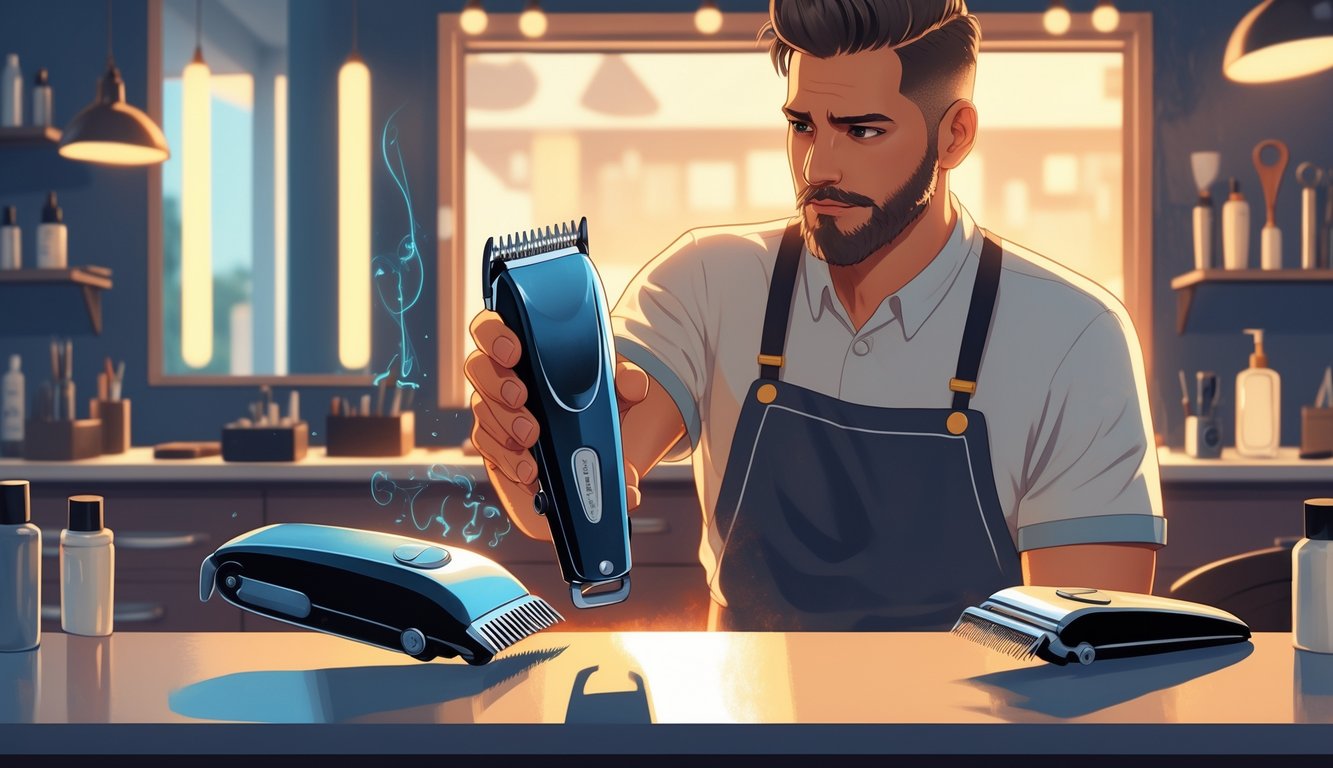
Conclusion: Make a Smart Investment
Trying to fade the back of my own head with some $20 supermarket clippers? Nope. Overheating blades, weird rattling, and it feels like it’s chewing, not cutting. A pro once told me, “If your clippers are noisy, they’re robbing power somewhere else.” Now I side-eye every cheap tool I own.
The silent, barbershop-grade ones? They never pull or die after a few cuts. I read somewhere on a barber supply blog that buying better clippers early means fewer do-overs, fewer split ends, and no burnt-out motors. I still forget to oil the blades and end up with jams, but a grooming teacher told me it costs “three times as much in replacements if you keep buying cheap.” Who tracks that? Someone with a spreadsheet, I guess.
And those “budget” clippers? They come with secret costs: constant replacements, dull blades, misaligned guides, and somehow, always lint in the motor. Why is there always lint? I don’t get it.
Look, I’m not pretending that spending money on barber tools is exciting. But nothing beats a quiet, steady clipper that just works. You barely notice it, except suddenly your hair looks decent and you’re done. If you’re still bargain hunting—good luck with the jagged lines.
Frequently Asked Questions
Barbers keep dropping cash on shiny new clippers, and two weeks later, they’re complaining about jammed levers and blades that sound like a dying electric toothbrush. Pros aren’t just being snobs—they buy the good stuff because it actually works, lasts, and doesn’t give up on you when you’re busiest.
What determines the quality of a good hair clipper for professional barbers?
I can usually tell in about three minutes—weight, motor noise, blade tension. I’ve used clippers that get hot like a toaster before you’re halfway through one cut. Everyone pushes ceramic blades as a must-have, but an old-school barber once told me, “You want tight steel, not toy-grade plastic.” And don’t even get me started on “waterproof” claims; I tried one that rusted after a week.
Could investing in professional-grade clippers save money in the long run?
It sounds backwards, but I keep a spreadsheet—$30 clippers end up in the trash every few months. The Andis or Wahl ones? Even with expensive repairs, they stick around for years. Professional barbers know it’s not about the price tag—it’s about reliability and volume. Plus, you’re not stuck mid-haircut hoping the attachment doesn’t fly off.
What features should I look for to ensure I’m buying a durable set of hair clippers?
Some people get obsessed with logos or color kits—sure, neon green looks cool online, until it cracks after one drop. Me? I want detachable blades, metal guides, corded options, and a motor that hums instead of screeching. Cleaning isn’t optional, by the way (see barber insurance guidelines). Dirty clippers are a health hazard, but nobody ever mentions sanitation as a buying factor. The UV box isn’t magic, trust me.
How do the costs of maintaining high-quality clippers compare to those of cheaper models?
I get tempted by discount clippers sometimes—plastic gears, impossible-to-find parts, blades that chip after three sharpenings. But the classics? Oil, brush, ten minutes of cleaning, and a sharpening service that costs less than a new cable for most cordless knockoffs. Even expert clipper care blogs complain that bad cleaning ruins the investment, which should be obvious, but apparently isn’t.
Why is it important to choose the right clipper and how does it affect a barber’s work?
I watched a guy use a household clipper because it was cheap—the power cord melted during a Saturday rush. The wrong clippers mean bad cuts, uneven lines, and angry clients. There’s actual data showing that sanitizing clippers keeps customers coming back, but nobody told me that when I started. Now I see it all the time—people watch everything you do and tweet about it if you mess up.
Is there a significant difference in performance between high-end and budget-friendly hair clippers?
Okay, so, is there actually a big difference? I mean, yeah, the cheap ones always snag and feel like they’re trying to shake your bones apart—no surprise there. But here’s the thing: do barbers really geek out about motor torque, or is that just marketing? I’ve watched enough of them fuss over blade speed like it’s the Holy Grail, but honestly, I’m not convinced half the time. I keep grabbing the budget clippers thinking, “Hey, maybe this time they won’t just crap out halfway through,” and then—nope, they choke right in the middle of a fade, and suddenly I’m apologizing to a guy with a half-buzzed head. Nobody talks about how the real test isn’t that first shiny unboxing, it’s after a month of hair gunk and dropped tools. Do I want to gamble my own hairline just to save a few bucks? Hard pass. But maybe I’m just paranoid. Or lazy. Or both. Anyway, this is what I keep reading, but, like, does anyone actually clean these things as often as they’re supposed to?



